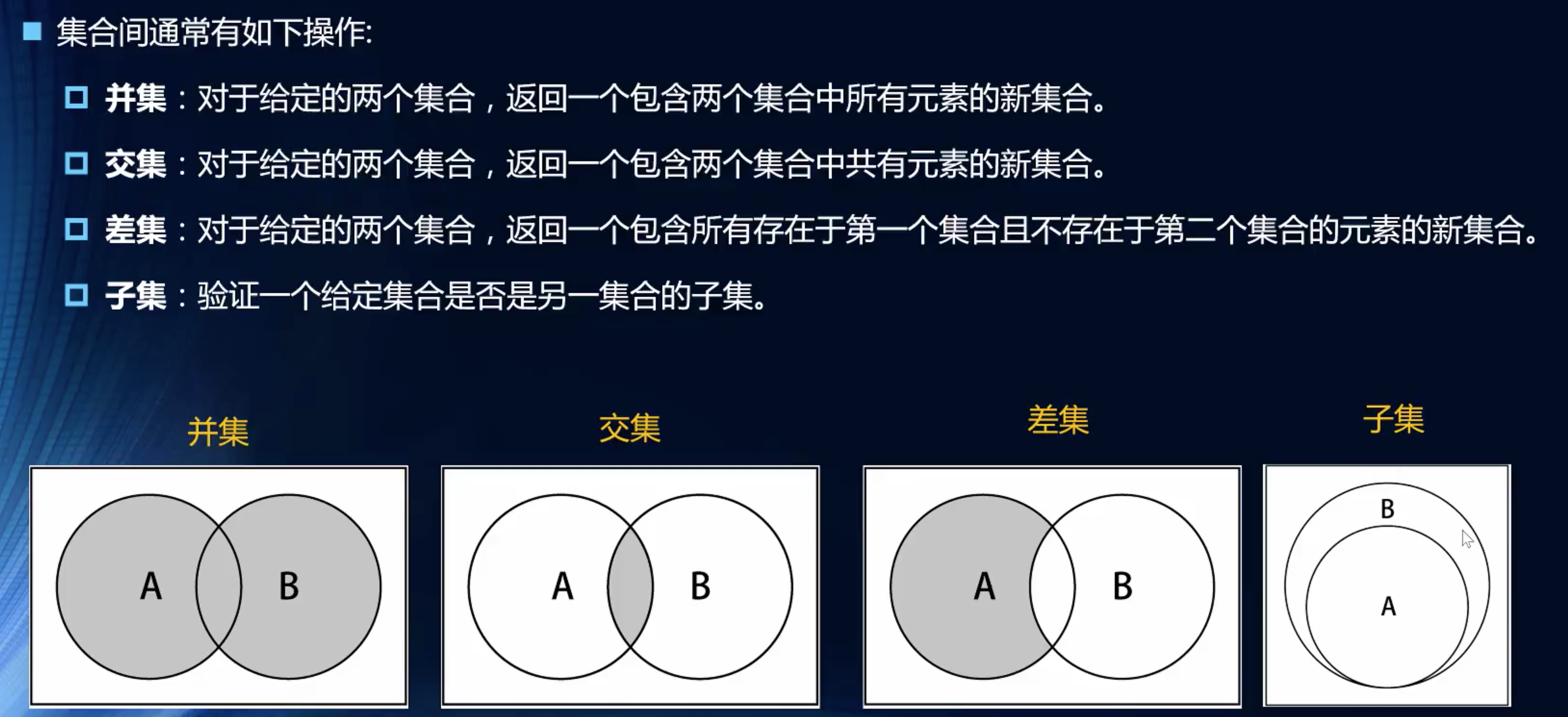javascript 集合和字典
//封装集合类
function Set(){
//属性
this.items={}
//方法
//add方法
Set.prototype.add=function(value){
//判断当前集合中是否已经包含了该元素
if(this.has(value)){
return false
}
//将元素添加到集合中
this.items[value]=value
return true
}
//has方法(指定对象自身属性中是否具有指定的属性)
Set.prototype.has=function(value){
return this.items.hasOwnProperty(value)
}
//remove方法
Set.prototype.remove=function(value){
//1.判断该集合中是否包含该元素
if(!this.has(value)) return false
//2.将元素从属性中删除
delete this.items[value]
return true
}
//clear方法
Set.prototype.clear=function(){
this.items={}
}
//size方法
Set.prototype.size=function(){
return Object.keys(this.items).length
}
//获取集合中所有的值
Set.prototype.values=function(){
return Object.keys(this.items)
}
}
//测试 Set 类
//1.常见 set 类对象
var set=new Set()
//2.添加 元素
alert(set.add('abc'))
alert(set.add('abc'))
alert(set.add('cba'))
alert(set.add('nba'))
alert(set.add('mba'))
alert(set.values())
//3.删除元素
alert(set.remove('abc'))
alert(set.remove('abc'))
alert(set.values())
//4.has方法
alert(set.has('abc'))
//5.获取元素的个数
alert(set.size())
set.clear()
alert(set.size())
集合中的操作:
//集合间操作
//1.并集
Set.prototype.union=function(otherSet){
//this:集合对象 A
//otherSet:集合对象 B
//1.创建一个新的集合
var unionSet=new Set()
//2.将 a 集合中的所有元素添加到新集合中
var values=this.values()
for(var i=0;i<values.length;i++){
unionSet.add(values[i])
}
//3.取出 B 集合的元素,判断是否需要加到新的集合
values=otherSet.values()
for(var i=0;i<values.length;i++){
unionSet.add(values[i])
}
return unionSet
}
//2.交集
Set.prototype.intersection=function(otherSet){
//1.this 集合 A
//otherSet:集合 B
//1.创建新的集合
var intersectionSet=new Set()
//2.从A 中取出一个个元素,判断是否同时存在集合 B中,存放在新集合中
var values=this.values()
for(var i=0;i<values.length;i++){
var item=values[i]
if(otherSet.has(item)){
intersectionSet.add(item)
}
}
//3.return
return intersectionSet
}
//3.差集
Set.prototype.difference=function (otherSet){
//this:集合 A
//otherSet: 集合 B
//1.创建新的集合
var differenceSet=new Set()
//2.取出 A集合一个个元素,判断是否同时存在 B 中,不存在B中,则添加到新集合中
var values=this.values()
for(var i=0;i<values.length;i++){
var item=values[i]
if(!otherSet.has(item)){
differenceSet.add(item)
}
}
return differenceSet
}
//4.子集
Set.prototype.subSet=function(otherSet){
//this :集合 A
//otherSet:集合 B
//遍历集合 A中所有元素,如果发现,集合 A的元素,在集合 B 中不存在,返回 false
//如果遍历完整个集合,依然没有返回 false ,那么返回 true 即可
var values=this.values()
for(var i=0;i<values.length;i++){
var item=values[i]
if(!otherSet.has(item)) return false
}
return true
}
测试:
//创建两个集合,并且添加元素
var setA=new Set()
//setA.add('abc')
setA.add('cba')
setA.add('nba')
var setB=new Set()
setB.add('aaa')
setB.add('nba')
setB.add('cba')
//2.求两个集合的并集
unionSet=setA.union(setB)
alert(unionSet.values())
//3.求两个集合的交集
var intersectionSet=setA.intersection(setB)
alert(intersectionSet.values())
//4.求两个集合的差集
var differenceSet=setA.difference(setB)
alert(differenceSet.values())
//5.判断子集
alert(setA.subSet(setB))

封装字典类:
//封装字典类
function Dictionary(){
//字典属性
this.items={}
//字典的操作方法
//1.在字典中添加键值对
Dictionary.prototype.set=function(key,value){
this.items[key]=value
}
//2.判断字典中是否有某个 key
Dictionary.prototype.has=function(key){
return this.items.hasOwnProperty(key)
}
//3.从字典中移除元素
Dictionary.prototype.remove=function(key){
//1.判断字典中是否有这个 key
if(!this.has(key)) return false
//2.从字典中删除 key
delete this.items[key]
return true
}
//4.根据 key 获取 value
Dictionary.prototype.get=function(key){
return this.has(key)?this.items[key]:undefined
}
//5.获取所有的 keys
Dictionary.prototype.keys=function(){
return Object.keys(this.items)
}
//6.size方法
Dictionary.prototype.keys=function(){
return this.keys().length
}
//7.clear方法
Dictionary.prototype.clear=function(){
this.items={}
}
}



